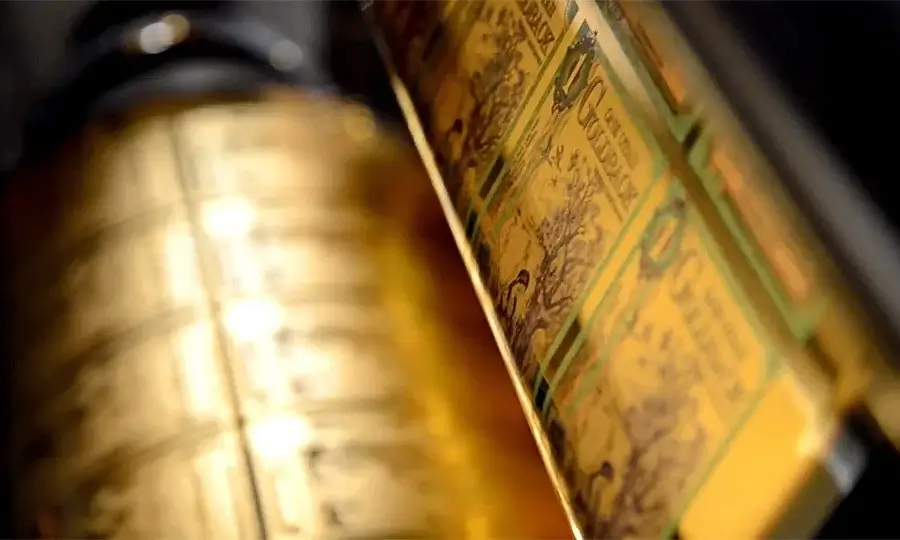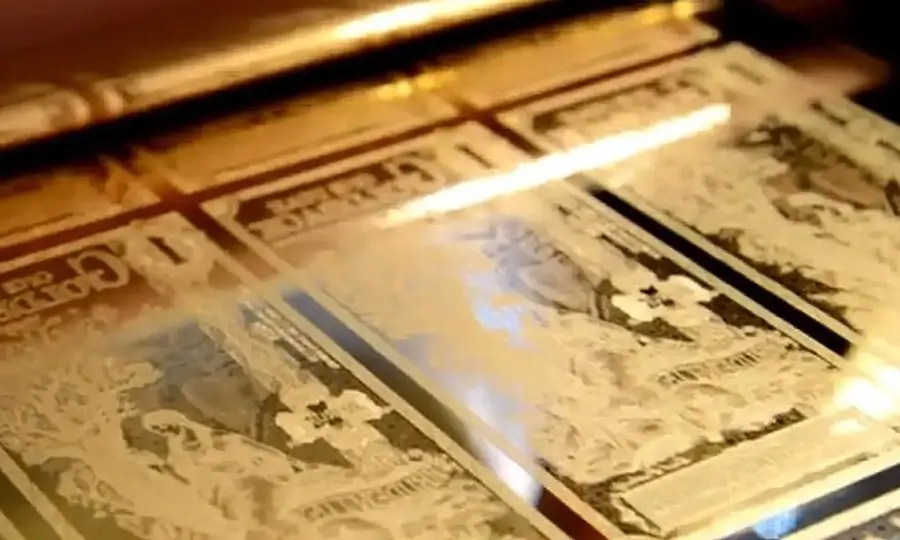Manufacturing Process
Goldbacks are created using a revolutionary process that combines advanced technology with precise engineering to create the world's first spendable, physical gold currency in small denominations.
The Challenge of Small Gold Denominations
For centuries, creating practical gold currency in small denominations has been nearly impossible. Traditional gold coins or bars in small amounts would be too tiny to handle and easily lost. Goldbacks solve this problem through an innovative manufacturing process that allows for precise amounts of gold to be applied to a larger, practical substrate.
Vacuum Deposition Technology
The core technology behind Goldbacks is a specialized vacuum deposition process. This process allows for an extremely thin but precise layer of 24K gold to be deposited onto a polymer substrate. The gold layer is incredibly thin—just a few atoms thick—but it contains exactly the specified amount of gold for each denomination.


Step-by-Step Manufacturing Process
1. Design and Artwork Creation
Each Goldback series begins with unique artwork design. For the Wyoming series, artists create detailed illustrations that represent the state's values and heritage. These designs are digitized and prepared for the production process.
2. Substrate Preparation
A special polymer substrate is prepared, which will form the base of the Goldback. This substrate is carefully cleaned and treated to ensure proper adhesion of the gold layer.
3. Vacuum Deposition
The substrate is placed in a vacuum chamber where all air is removed. Gold is then heated to its vaporization point, and the gold atoms are deposited onto the substrate in a precisely controlled manner. The amount of gold deposited is carefully measured to ensure each denomination contains exactly the specified amount (1/1000 oz per 1 Goldback).
4. Protective Layering
Once the gold layer is applied, additional protective polymer layers are added to create a sandwich-like structure. These layers protect the thin gold film from damage while preserving the beautiful appearance of the gold.
5. Security Features Integration
Various security features are incorporated into the Goldback during production. These include serialization, microprinting, specialized inks, and other anti-counterfeiting measures that help ensure the authenticity of each Goldback.
6. Cutting and Finishing
The completed sheets are precisely cut to the final dimensions of approximately 3.4" x 1.7". Quality control checks are performed throughout this process to ensure each Goldback meets rigorous standards.
7. Final Inspection and Packaging
Each Goldback undergoes a final inspection to verify its gold content, dimensions, and overall quality. They are then packaged in protective sleeves or other containers to prevent damage during handling and shipping.
Technical Specifications
Quality Control and Verification
Goldbacks undergo rigorous testing throughout the manufacturing process. Each batch is verified for gold content using specialized equipment to ensure the exact amount of gold is present. Additionally, visual inspections and durability tests are conducted to guarantee the quality of every Goldback.
The end result is a beautiful, durable gold note that contains a precise amount of 24K gold and can be used as a voluntary currency or collected as a store of value.
